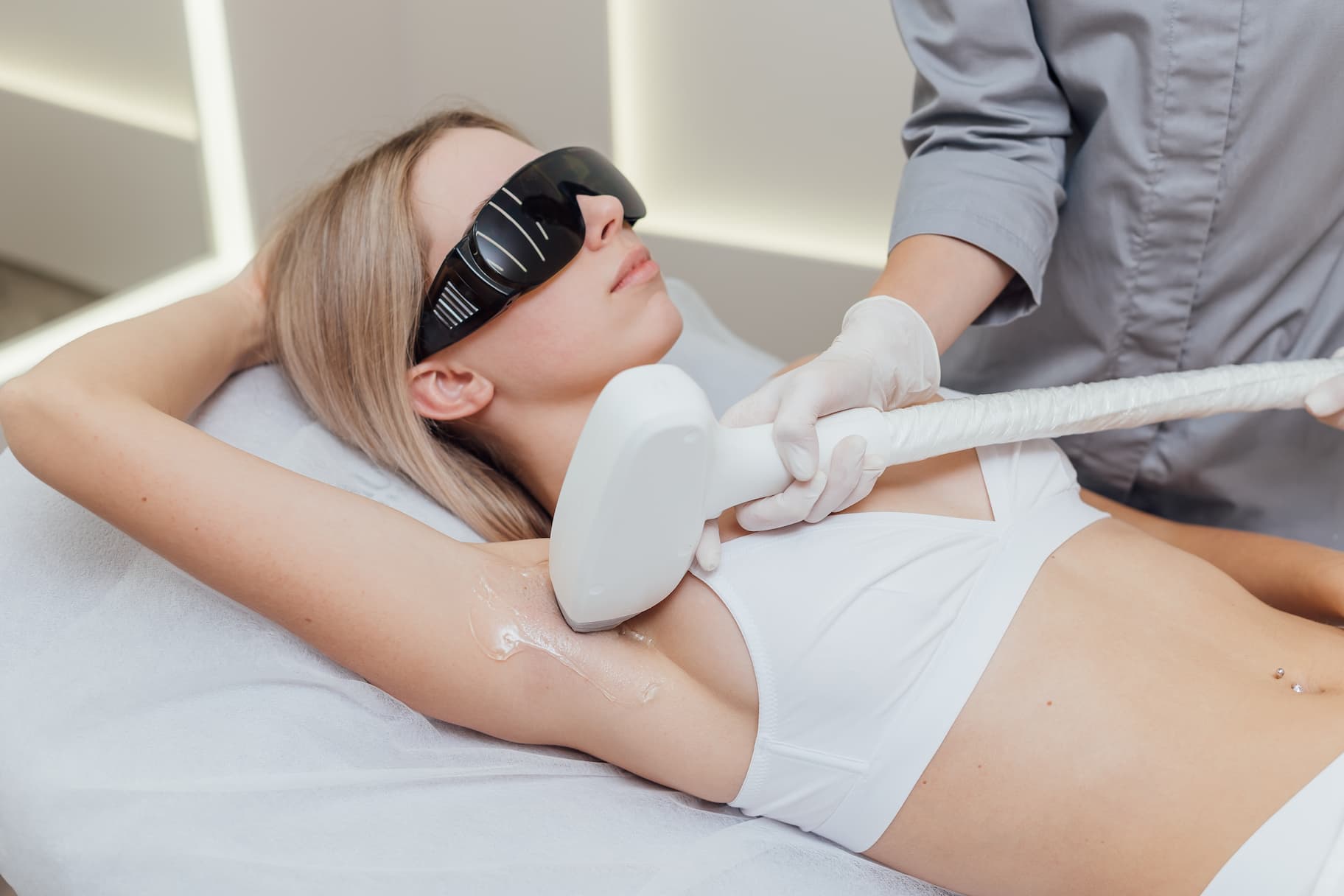
Can You Breastfeed with Implants?
Can you breastfeed with implants, and if so, how does it work? These are questions that many women with breast implants may ponder as they embark on their journey into motherhood.
Motherhood is a remarkable journey, marked by moments of joy, tenderness, and an unbreakable bond between a mother and her child. Central to this journey is the act of breastfeeding, where a mother nourishes her baby with love and essential nutrients.
Whether you're a new mother with implants or considering breast surgery in the future, this guide will provide you with the knowledge and support you need to embark on your breastfeeding journey with confidence. Let's delve into this vital aspect of motherhood and answer the question: Can you breastfeed with implants?
Can You Breastfeed with Implants Over the Muscle?
One of the initial concerns that women with breast implants frequently raise is whether they can breastfeed if their implants are positioned above the chest muscle. The reassuring news is that breastfeeding with implants is generally feasible in this situation, as the implants are typically located over the milk ducts and glands. Consequently, they should not obstruct the natural flow of breast milk, preserving the appearance of your breasts before and after breastfeeding.
While breastfeeding with implants over the muscle is generally feasible, it's essential to keep in mind that individual experiences may vary. Some women may encounter challenges such as reduced milk supply or discomfort during breastfeeding with implants. To mitigate these issues, consulting with a lactation specialist or a healthcare professional experienced in breastfeeding with implants is advisable. They can offer guidance and support to ensure a successful breastfeeding journey.
Can You Breastfeed with Implants Under the Muscle?
Breast implants placed under the chest muscle, known as submuscular placement, are another common surgical approach. This placement may raise questions about breastfeeding feasibility, breastfeeding with implants. Fortunately, breastfeeding is often more straightforward when implants are situated under the muscle, preserving the appearance of your breasts before and after breastfeeding.
The implants are less likely to interfere with boobs after breastfeeding, and milk ducts and glands, making it easier for breastfeeding with implants and ensuring that breast implants and breast feeding do not pose significant challenges. This makes it possible for you to can you breastfeed with breast implants, and can you still breastfeed with implants, and even can i breastfeed with implants without significant hindrance. This scenario provides reassuring answers to common questions like does breastfeeding ruin your breast, and affirms that can you breastfeed after a boob job and "can you breastfeed after a breast reduction are often positive outcomes.
Breastfeeding with implants under the muscle is generally considered safe, and many women do so successfully. However, as with any aspect of breastfeeding, individual experiences can vary. Some women may still encounter challenges such as latch difficulties or discomfort. Seeking guidance from a lactation consultant or a healthcare provider with expertise in breastfeeding with implants can be invaluable in addressing these challenges and ensuring a positive breastfeeding experience.

Is it Safe to Breastfeed with Implants?
Breastfeeding with breast implants is generally safe for both mother and baby. Implants are made from safe, biocompatible materials designed to endure the natural changes in breast size and shape during pregnancy and breastfeeding. Breast milk composition remains consistent for mothers with or without implants, providing vital nutrients and antibodies.
Breastfeeding does not typically damage implants, as they are durable and positioned behind milk ducts and glands. Challenges, such as reduced milk supply or changes in nipple sensitivity, can occur but are often manageable with professional support. Regular monitoring of implant condition is essential for safety and longevity. In summary, breastfeeding with breast implants is generally safe and offers the same health benefits as breastfeeding without implants, with manageable challenges.
What Can I Do to Successfully Breastfeed with Breast Implants?
Navigating motherhood with breast implants while successfully breastfeeding, and preserving the appearance of your breasts after breastfeeding or boobs after breastfeeding, is entirely achievable. To optimize your breastfeeding with implants experience and ensure that your breasts before and after breastfeeding remain as you desire, consider the following steps:
Pre-Planning and Communication: Prior to breast augmentation or reduction, engage in candid discussions with a surgeon skilled in preserving breastfeeding function, addressing concerns about "does breastfeeding ruin your breast."
Consult a Lactation Specialist: Seek early guidance from a lactation specialist experienced in assisting women with " breast implants and breast feeding," and "can you breastfeed after a breast reduction." They can give you specific advice, overcome possible difficulties and answer the question "Can you breastfeed with breast implants?" They can answer the question more clearly.
Breast Pump Usage: Invest in a high-quality breast pump, which can assist in maintaining milk supply and relieving engorgement, as well as storing milk.
Implant Health Maintenance: Regularly monitor implant condition to ensure it doesn't affect your breastfeeding with implant and seek professional guidance for prompt issue resolution.
Patience and Persistence: Understand that breastfeeding can be a learning process for both you and your baby, and seek help from healthcare providers or lactation specialists when needed.
Nutrition and Hydration: Sustain a balanced diet and proper hydration to support milk production.
Nipple Care: Prioritize nipple care to prevent discomfort and potential issues, utilizing nipple shields and creams as necessary.
Seek Professional Guidance: If you encounter challenges during breastfeeding with implants, don't hesitate to consult lactation specialists or healthcare professionals with expertise in this area for personalized solutions.
Breastfeeding with implants is a journey that can be rewarding with the right preparation and support, allowing you to cherish the joys of motherhood while nurturing your child and preserving the appearance of your "breasts after breastfeeding" or "boobs after breastfeeding."
Choosing the Right Implant Type for Your Unique Breastfeeding Experience
Choosing the right implant type for your unique breastfeeding experience is a pivotal decision that harmonizes your aesthetic aspirations with the precious journey of motherhood. Understanding the nuances of breast augmentation with an eye toward breastfeeding is essential. Silicone and saline implants each have their characteristics and potential impacts on breasts before and after breastfeeding. While both types offer natural-looking results, women need to navigate these choices thoughtfully.
Conversations with your surgeon about the possibility of breastfeeding with implants should encompass submuscular or subglandular placement and potential considerations for the breasts after breastfeeding. By weighing the benefits and potential risks of each implant type while keeping your long-term breastfeeding goals in mind, you can make an informed choice that supports both your self-confidence and the joys of breastfeeding.
Breastfeeding with implants is indeed a possibility for many women, and understanding how implants interact with breastfeeding can help you prepare for your unique breastfeeding journey. Whether you're contemplating the question, "can you still breastfeed with implants?" or concerned about the impact of breastfeeding on the appearance of your breasts after breastfeeding, selecting the right implant type is a pivotal step. It's important to remember that your decision is deeply personal, and with the guidance of experienced healthcare professionals and a thoughtful approach, you can enjoy the benefits of breast augmentation while embracing the joys and challenges of breastfeeding.
Does Breastfeeding Ruin Your Breast Implant?
One common misconception is that breastfeeding can ruin breast implants. In reality, breastfeeding itself is not likely to damage or alter the shape of your implants. However, fluctuations in breast size during pregnancy and breastfeeding may lead to changes in breast appearance, regardless of whether you have implants. It's essential to maintain realistic expectations and consider potential cosmetic adjustments in the future if desired.
Challenges If You Breastfeed with Implants
Breastfeeding with breast implants can present unique challenges. Some of the common difficulties include:
Reduced Milk Supply: While breast implants typically do not affect milk production, some women may experience a temporary decrease in milk supply. This can often be addressed through proper breastfeeding techniques, frequent nursing, and consultation with a lactation specialist.
Nipple Sensation: Breast surgeries can sometimes affect nipple sensation, which may impact the ease of breastfeeding. Nipple shields and other aids can help overcome this challenge.
Latch Issues: Babies may have difficulty latching onto the breast if the implant interferes with proper positioning. Working with a lactation consultant can help address these issues.
Healthy Türkiye Notes
Breastfeeding with implants is a rewarding journey that blends the joys of motherhood with your personal aspirations. While some myths may suggest that breastfeeding can ruin your breast implants, in reality, breastfeeding is not likely to damage or alter the shape of your implants. However, it's essential to be aware of potential challenges, including reduced milk supply, changes in nipple sensation, and latch issues that may arise when breastfeeding with breast implants. These challenges can often be addressed with the right guidance and support.
In summary, breastfeeding with breast implants is generally safe, and you can cherish the joys of motherhood while preserving the appearance of your breasts after breastfeeding. Remember that your decision is personal, and with the guidance of experienced healthcare professionals, you can navigate the unique challenges and rewards of breastfeeding with confidence.



